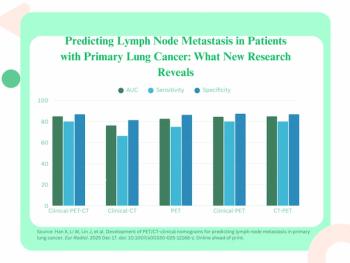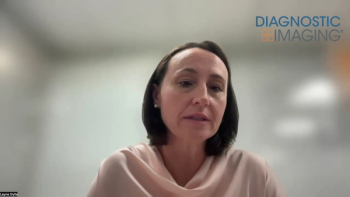
Prototype automated expert system aids Alzheimer's disease diagnosis
A computer-based expert system can diagnose Alzheimer's disease with an accuracy comparable to experienced nuclear medicine physicians, according to a study presented at the Society of Nuclear Medicine meeting in June.
A computer-based expert system can diagnose Alzheimer's disease with an accuracy comparable to experienced nuclear medicine physicians, according to a study presented at the Society of Nuclear Medicine meeting in June.
Nuclear medicine physicians often look for a typical pattern of impaired cerebral glucose metabolism in determining this diagnosis, according to coauthor Dr. Peter Bartenstein, chair of nuclear medicine at Gutenberg University Mainz in Germany.
Bartenstein and colleagues used 3D standard surface projections of stereotactically normalized brain PET scans and a data set of standardized regions of interest. These were projected in frontal, central, parietal, temporal, and occipital areas of the brain as the basis for an automated expert system.
Two expert readers established a set of rules for diagnosis by comparing the 3D surface projections with 20 normal controls. The rules were used to develop an automated system that would generate a straightforward AD or non-AD diagnosis.
The researchers tested the system on 150 PET data sets. They compared the automated system results with reads done by three experts who had been blinded to all other imaging or clinical data.
The concordance between the automated system and the nuclear medicine experts for all data sets had a kappa value of 0.76 to 0.83, with a kappa value of greater than 0.7 indicating satisfactory congruence.
The use of the system did not significantly increase the time needed for analysis, which took less than 15 minutes, according to Bartenstein.
One major application for the system could be training physicians to diagnose AD. Inexperienced readers reported that the system was both a welcome aid and a learning tool, he said.
Future enhancements to the system could include the implementation of artificial intelligence so that the program can improve on the quality of its decisions. This implementation could also extend the system to identify specific patterns in other dementia disorders such as frontotemporal or Lewy body dementia.
"Ultimately, the final diagnosis of the patient's PET scan should not be based on the results provided by the program alone," Bartenstein said. "It should be used mainly for self-evaluation. In difficult cases, it could be used to support the decision the physician has already made."
For more information, visit Diagnostic Imaging's
Newsletter
Stay at the forefront of radiology with the Diagnostic Imaging newsletter, delivering the latest news, clinical insights, and imaging advancements for today’s radiologists.




























